Nuclear fuel at Fukushima No. 1 unit melted after full exposure Kyodo News, via Godlike Productions.
Water inside the troubled No. 1 reactor of the Fukushima Daiichi nuclear power plant was at an unexpectedly low level, not enough to cover the nuclear fuel, hinting that a large part of the fuel melted after being fully exposed, Tokyo Electric Power Co. said Thursday based on data obtained by adjusted gauges.
Reactor 1 Melted Down, but Osama's porn stash is more important.
Radiation Levels Higher Than Chernobyl Evacuation Limits Span Over 800 KM in Japan Alexander Higgins Blog. Excerpts:
The latest joint US and Japan survey shows extremely high levels of nuclear radioactive contamination, with radiation levels higher than Chernobyl evacuation limits, now span over 800 kilometers in Japan.
Fukushima Live Cam 24/7 You Tube via Rense.
THREE Nuclear Containment Vessels Leaking in Japan ... But U.S. Law Is Based on Assumption that It Is Impossible for Containment Vessels to Leak Washington's Blog. Excerpts:
It is newsworthy that the operator of Japan's stricken nuclear plants is finally admitting that Fukushima reactor number 1 has melted down.
But nuclear expert Arnie Gundersen says that the containment vessels for reactors 1, 2 and 3 are all leaking.
However, Gundersen points out, the Nuclear Regulatory Commission assumes that containment vessels cannot leak and there is a "zero probability of containment leakage". U.S.. nuclear laws are based around that obviously false assumption.
Tokyo Japan Being Hit With MASSIVE Radiation May 13th 2011 You Tube via Rense.
#Fukushima I Nuke Plant: Radiation on 2nd Floor of Reactor 1 Exceeded 1,000 Millisieverts/Hour Ex-SKF via Rense. Excerpts:
When 7 TEPCO employees and 2 NISA employees entered the Reactor 1 reactor building on early hours of May 9 (JST), the act that released mere 500 million becquerels of radioactive iodine and cesium into the atmosphere, they measured the radiation level on the ground floor which was 600 to 700 millisieverts/hour at the highest spot.
Then on May 10, someone went upstairs to the 2nd floor for the first time since March 11, and measured the radiation there. It was so high that the Geiger counter couldn't accurately measure.
It’s Official: Fukushima Was Hit With a Nuclear Meltdown Gizmodo. Excerpts:
The possibility of a meltdown has been floating in the air since the earthquake and subsequent explosions first rocked the roof off of Fukushima, spreading radiation, confusion, and displacement across the local populace (and beyond). Since then, TEPCO workers and the Japanese government have desperately struggled to keep the nuclear fuel rods inside the reactors cool—if they don't, the scorching material will melt into a pool of radioactive lava, further damaging the facility. That's the scenario everyone's been aiming to avoid—and that's the scenario we now know had actually occurred all along. Underneath all that dumped seawater has been lying a blob of melted fuel. And it could be melting its way out.
This admittance goes against every assurance TEPCO has handed the world in the midst of Japan's nuclear crisis—that the situation was bad, but that with emergency work, the plant would be mostly stable, and could be safely shutdown within the year. The worry now, beyond the fact that the damage to the reactor is far worse than imagined, is that a hole in the facility will lead incredibly contaminated water leak out like a faucet. A scalding, radioactive faucet.
So now what? "We will have to revise our plans," Junichi Matsumoto, a TEPCO rep, told The Telegraph. To say the least.
Water inside the troubled No. 1 reactor of the Fukushima Daiichi nuclear power plant was at an unexpectedly low level, not enough to cover the nuclear fuel, hinting that a large part of the fuel melted after being fully exposed, Tokyo Electric Power Co. said Thursday based on data obtained by adjusted gauges.
Reactor 1 Melted Down, but Osama's porn stash is more important.
Radiation Levels Higher Than Chernobyl Evacuation Limits Span Over 800 KM in Japan Alexander Higgins Blog. Excerpts:
The latest joint US and Japan survey shows extremely high levels of nuclear radioactive contamination, with radiation levels higher than Chernobyl evacuation limits, now span over 800 kilometers in Japan.
Fukushima Live Cam 24/7 You Tube via Rense.
THREE Nuclear Containment Vessels Leaking in Japan ... But U.S. Law Is Based on Assumption that It Is Impossible for Containment Vessels to Leak Washington's Blog. Excerpts:
It is newsworthy that the operator of Japan's stricken nuclear plants is finally admitting that Fukushima reactor number 1 has melted down.
But nuclear expert Arnie Gundersen says that the containment vessels for reactors 1, 2 and 3 are all leaking.
However, Gundersen points out, the Nuclear Regulatory Commission assumes that containment vessels cannot leak and there is a "zero probability of containment leakage". U.S.. nuclear laws are based around that obviously false assumption.
Tokyo Japan Being Hit With MASSIVE Radiation May 13th 2011 You Tube via Rense.
#Fukushima I Nuke Plant: Radiation on 2nd Floor of Reactor 1 Exceeded 1,000 Millisieverts/Hour Ex-SKF via Rense. Excerpts:
When 7 TEPCO employees and 2 NISA employees entered the Reactor 1 reactor building on early hours of May 9 (JST), the act that released mere 500 million becquerels of radioactive iodine and cesium into the atmosphere, they measured the radiation level on the ground floor which was 600 to 700 millisieverts/hour at the highest spot.
Then on May 10, someone went upstairs to the 2nd floor for the first time since March 11, and measured the radiation there. It was so high that the Geiger counter couldn't accurately measure.
It’s Official: Fukushima Was Hit With a Nuclear Meltdown Gizmodo. Excerpts:
The possibility of a meltdown has been floating in the air since the earthquake and subsequent explosions first rocked the roof off of Fukushima, spreading radiation, confusion, and displacement across the local populace (and beyond). Since then, TEPCO workers and the Japanese government have desperately struggled to keep the nuclear fuel rods inside the reactors cool—if they don't, the scorching material will melt into a pool of radioactive lava, further damaging the facility. That's the scenario everyone's been aiming to avoid—and that's the scenario we now know had actually occurred all along. Underneath all that dumped seawater has been lying a blob of melted fuel. And it could be melting its way out.
This admittance goes against every assurance TEPCO has handed the world in the midst of Japan's nuclear crisis—that the situation was bad, but that with emergency work, the plant would be mostly stable, and could be safely shutdown within the year. The worry now, beyond the fact that the damage to the reactor is far worse than imagined, is that a hole in the facility will lead incredibly contaminated water leak out like a faucet. A scalding, radioactive faucet.
So now what? "We will have to revise our plans," Junichi Matsumoto, a TEPCO rep, told The Telegraph. To say the least.













































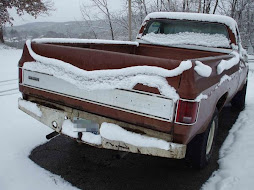

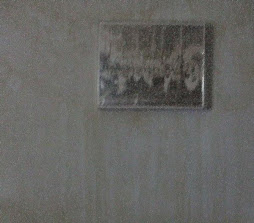






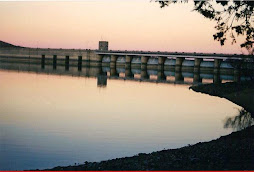







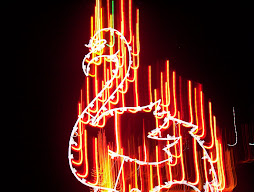


















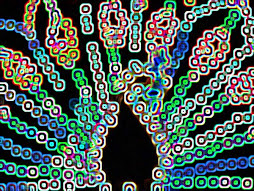









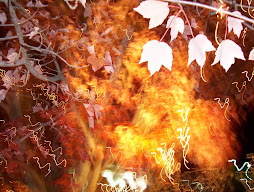













No comments:
Post a Comment